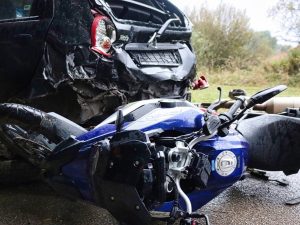While motorcycles offer an unbeatable sense of freedom and adrenaline, those of us who love to ride also know that our beloved two-wheelers generally don’t last as long as cars.
If you’re shelling out cash for a new bike or paying yet another repair bill, you may have wondered why motorcycles seem to break down more frequently and have shorter lifespans than four-wheeled vehicles.
There are some key reasons for the discrepancy, including how the engines and components are designed and built, as well as how motorcycles are typically used.
Read on to learn more about why your motorcycle isn’t likely to make it to 200,000 miles like your car might.
Motorcycles vs Cars: Shelf Life
While cars can rack up hundreds of thousands of miles over their lifetimes, motorcycles generally have a lower shelf life and require more frequent maintenance and repairs.
Here are a few reasons why:
Engine Cycles
A car engine may go through thousands of start-up and shut-down cycles in its lifetime, and a motorcycle engine endures even more cycles. Each cycle places stress on the engine, wearing down parts faster.
Since motorcycles are often used for shorter trips, this translates to more cycles and accelerated wear and tear. As one motorcycle owner puts it, “One motorcycle mile is like 10 car miles.”
Materials
Motorcycle engines are often made of aluminum, which expands more than iron with heat. This expansion and contraction with each cycle strains components like head gaskets and seals, necessitating more frequent replacement.
In comparison, car engines are typically made of more durable materials that can handle these cycles with less wear.
Overheating
It’s easier for a motorcycle engine to overheat, since they have less thermal mass and fewer systems to dissipate heat. Once overheated, the intricate machinery inside can suffer permanent damage.
However, a car engine has more safeguards against overheating and can recover from a temporary spike in temperatures with less damage.
Proper motorcycle maintenance and keeping a close eye on oil and coolant levels are critical to avoid this issue.
Intended Use
While cars are designed as everyday transportation to rack up lots of miles, most motorcycles are built for performance. The engines are built for acceleration and speed, not longevity, so they tend to have lower lifespans.
Cruiser-style motorcycles are more focused on long-distance riding, so they typically have more robust engines. However, they still have shorter lifespans than cars.
Exposure to Elements
Motorcycles offer little protection from the elements, exposing critical components to weather, dust, and debris that can degrade them faster than a car’s enclosed components.
Vibration
The engine and drivetrain on a motorcycle are directly mounted to the frame, transmitting more vibration to the motorcycle and its components. This vibration can cause faster wear and tear.
Less Crash Protection
In the event of an accident, a motorcycle offers much less protection than a car. A severe crash can damage the frame or engine beyond repair, significantly shortening the lifespan.
Aftermarket Modifications
While modifications can enhance performance, they can also introduce more stress on components or be installed incorrectly, reducing the lifespan. Non-standard parts may also be more prone to failure.
Budget-friendly Manufacturing
Some motorcycles are produced very affordably by keeping components and materials basic, but this can mean a shorter overall lifespan and less durability.
Higher-end motorcycle brands typically use higher quality components and more advanced engineering, resulting in longer lifespans.
Rider Behavior
An aggressive riding style that frequently redlines the engine or locks up the brakes can reduce a motorcycle’s lifespan. How a rider operates the bike on a daily basis has a significant impact on wear and tear.
RELATED: 8 Reasons Why Riding a Motorcycle Is Better Than Driving a Car
Some Tips for Extending the Lifespan of a Motorcycle
Here are some tips to help extend the lifespan of a motorcycle:
Perform regular maintenance like oil changes, filter replacements, and tire inflation on schedule. Keeping the bike well-maintained is the best way to avoid premature wear and component failure.
Follow the recommended service intervals in the owner’s manual. The manufacturer knows the bike best and will specify proper maintenance to maximize the lifespan.
Fix any problems early. Addressing issues proactively will prevent further damage and avoid costly repairs down the road.
Ride smoothly and avoid excessive stress on the engine and components. Accelerating, braking, and turning hard puts extra stress on the motorcycle.
Keep the bike clean and protect it from the elements. Wash and wax the bike regularly and store it in a garage if possible. Harsh weather and debris can degrade components faster.
Use high-quality parts and lubricants. Higher-end components and fluids will generally last longer and perform better than cheap alternatives.
Know when it’s time for replacement. If the cost of repairs starts to outweigh the value of an older bike, it may make more sense to replace it rather than sink more money into it. Trade it in or sell it for parts and purchase a newer model.
Common Maintenance Tasks to Increase Motorcycle Lifespan
Some important maintenance tasks for motorcycle owners to perform regularly include:
- Checking and changing the engine oil and oil filter. Fresh oil is essential for lubricating the engine and keeping it running smoothly.
- Inspecting and replacing the air filter. The air filter keeps debris out of the engine and needs to be checked and replaced as needed to ensure good airflow.
- Inflating the tires to the proper pressure. Properly inflated tires are important for handling, braking, and fuel economy.
- Cleaning or replacing the spark plugs. Dirty or worn out spark plugs can cause the engine to misfire, reducing performance.
- Adjusting the drive chain. The drive chain needs to have the proper tension and alignment to work efficiently and avoid premature wear.
- Checking and charging the battery. The battery provides electrical power to start the engine and accessories, so it’s important to check the charge level and charge it as needed.
- Cleaning the motorcycle thoroughly. Washing and waxing the bike helps remove dirt and debris and prevent rust and corrosion.
- Inspecting and replacing worn components like brake pads or cables. It’s important to inspect critical components and replace them when they show signs of significant wear to ensure safe operation.
RELATED: 9 Easy Motorcycle Maintenance Basics Before Spring Riding
Conclusion
While motorcycles may not have the longevity of cars, for many riders the passion for riding makes the extra maintenance and repair costs worthwhile.
As long as you go into motorcycle ownership with realistic expectations about lifespan and costs, and are diligent about regular maintenance, you can maximize your time enjoying the ride rather than dealing with breakdowns.
FAQs about Motorcycle vs Car Lifespan
Why do motorcycles have shorter lifespans than cars?
Motorcycles have less structural protection, more mechanical parts exposed to weather and road debris, and experience greater wear and tear on things like tires, chains, and clutches due to less weight distributing stress.
Do all motorcycles have shorter lifespans than cars?
Cruiser-style motorcycles designed for long-distance touring typically have more durable engines and components, so they may have longer lifespans than sport bikes or other high-performance motorcycles. However, in general, motorcycles still have shorter lifespans than cars due to the factors described above.
How many miles can you expect to get out of a motorcycle?
It depends on the motorcycle type, how well it’s maintained, and how it’s ridden, but a typical lifespan might be around 50,000 to 100,000 miles. Sport bikes on the lower end of that range, while cruiser models may reach the higher end or beyond with proper care. In comparison, cars can often exceed 200,000 miles with few issues.
What parts wear out the fastest on motorcycles?
Parts that wear out the fastest are often tires, chains, drive belts, engine/transmission oil seals, clutch plates, throttle and brake cables, and brake discs/pads due to repeated use and exposure to the elements. Suspension components also deteriorate quicker on motorcycles.
What are some signs my motorcycle needs repairs?
Vibrating or excessive noise from parts like engine, chain, or belt drive; increased difficulty shifting gears; fluid leaks; abnormal tire wear; problems starting or running the engine; and failure of electronic components can all signal the need for repairs.
How do I extend the life of my motorcycle?
Proper maintenance like timely fluid and filter changes, regular lubrication, and adjustment of parts can extend a bike’s life. Covering and storing the motorcycle properly when not in use also helps. Avoiding aggressive riding and reducing high-stress situations can ease wear on components.
What motorcycle maintenance should I do myself?
You can do some routine maintenance yourself like oil and fluid changes, air filter checks, tire pressure checks, drive chain lubrication, and brake inspections. More complex tasks like valve adjustments, clutch replacements, and electrical diagnostics are best left to professionals.
When should I consider replacing my motorcycle?
You should consider replacing your motorcycle when repair costs become disproportionately high compared to the bike’s value, major components (engine, transmission, etc) begin to fail prematurely or regularly, or if safety has been compromised due to deteriorating parts. However, replacement depends on your priorities and budget.




